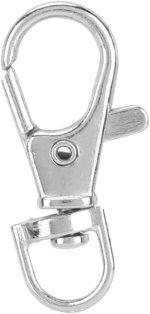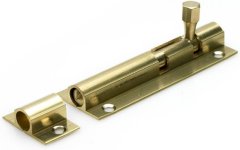- Messages
- 16,887
- Reaction score
- 34,363
- Points
- 1,373
A good tip from Rainbow for a thread on preventing escapes from cages  I'm sure most of us know that a cage needs to be able to be securely fastened, but individual cages have individual quirks, and this may be helpful for first time owners who join. Hamsters are great escape artists!
I'm sure most of us know that a cage needs to be able to be securely fastened, but individual cages have individual quirks, and this may be helpful for first time owners who join. Hamsters are great escape artists!
Cage locks and bolts
Barred cages have doors which fasten closed - some better than others. Hamsters have been known to unfasten cage doors on doors that are not that tight fitting or easy to clip open and closed. Especially on smaller doors. So if a cage has a loose fastening like that, then additional measures are needed! Maybe a bulldog clip or a lock. Yes you can get locks for hamster cages. Something like this perhaps, or repurpose another type of lock.

Metal cage lock
For cages that have a top door, sometimes just putting a couple of books on top helps close up any gaps around the door that a hamster may try to squeeze under.
For a tank style cage, a lid needs to fit firmly and securely. Some lids won't be that tight, for ease of use, and a hamster could actually push a lid up and escape - that has been known on a number of occasions! You could use books again to weight it down, or an easier option ongoing, might be to just attach a small bolt. Like this

Small bolt
Another escape route from tank or bin cage lids, can be the mesh. The mesh needs to be no bigger than 1cm squared mesh. Larger mesh could not only allow a hamster to squeeze through (and they will get up to the roof!) but also a hazard, as the hamster could get stuck and injured.
Wood cages and Chewing
Some hamsters will chew through wood cages, surprisingly easily. Some won't. So with a wood cage, depending on what type it is, you may need to put a solid floor in (some people tile the floors of pawhut wood cages) or metal brackets at the corners. If you know your hamster isn't an avid chewer this may not be necessary. But if you notice any kind of chewing at the cage, it's best to reinforce the corners, base and any other chew points. This can happen in various styles of wood or fibreboard cages like diy cages, but apparently Pawhut wood cages are quite thin wood, particularly the floor and quite easily chewed through and there have been quite a few escapes from these.
Rodipet Laola cages are more secure but female Syrians have been known to chew their way out. It is probably primarily Syrians that try to escape!
Some hamsters have even chewed through the plastic bases of barred cages. This is usually when the cage is too small, or if there isn't enough enrichment to keep a hamster happy - but not always. If it just happens to be a maverick chewing hamster they may manage to chew a hole in a cage base - usually at a corner, but sometimes near a rim to make a hole under the bars. Again it's a case of looking out for any signs of chewing and checking the base regularly if you have a chewy hamster. Especially if they've done it before! Cage base holes can be repaired however.
Likewise hamsters have been known to chew out of bin cages, regardless of whether there is a secure lid - usually bottom corners again. If that happens then a larger cage is probably needed and an awareness of it being as chewproof as possible.
Glass tanks
While hamsters can't chew through glass, they have been known to chew away the silicone sealant at the edges of some tanks or detolfs - meaning it can fall apart! I think it was the Ferplast Karat base that had this issue particularly, but also other tanks or detolfs.
Although this all might sound alarming, a hamster will not normally try to escape unless the cage is too small or they are stressed by lack of enrichment or overcleaning - unless it's a wood cage and then maybe they just do it because they can! And hamsters can be quite contrary and want to flip open a door because they can!
If a hamster does escape, there are ways of finding and catching them again (there is an article on the home page about this). Sometimes that's easy - they're just sitting next to the cage looking cheeky, or in a cosy corner of the sofa. But there are times sadly, when a hamster can't be found, or can become injured or killed, so preventing escapes is the key.
Plenty of enrichment, space and out of cage time helps them be settled. But check the door on barred cages! And watch for any chewing of the cage.
Please post any tips you have for cage locks or other means of securing cages!
Cage locks and bolts
Barred cages have doors which fasten closed - some better than others. Hamsters have been known to unfasten cage doors on doors that are not that tight fitting or easy to clip open and closed. Especially on smaller doors. So if a cage has a loose fastening like that, then additional measures are needed! Maybe a bulldog clip or a lock. Yes you can get locks for hamster cages. Something like this perhaps, or repurpose another type of lock.

Metal cage lock
For cages that have a top door, sometimes just putting a couple of books on top helps close up any gaps around the door that a hamster may try to squeeze under.
For a tank style cage, a lid needs to fit firmly and securely. Some lids won't be that tight, for ease of use, and a hamster could actually push a lid up and escape - that has been known on a number of occasions! You could use books again to weight it down, or an easier option ongoing, might be to just attach a small bolt. Like this

Small bolt
Another escape route from tank or bin cage lids, can be the mesh. The mesh needs to be no bigger than 1cm squared mesh. Larger mesh could not only allow a hamster to squeeze through (and they will get up to the roof!) but also a hazard, as the hamster could get stuck and injured.
Wood cages and Chewing
Some hamsters will chew through wood cages, surprisingly easily. Some won't. So with a wood cage, depending on what type it is, you may need to put a solid floor in (some people tile the floors of pawhut wood cages) or metal brackets at the corners. If you know your hamster isn't an avid chewer this may not be necessary. But if you notice any kind of chewing at the cage, it's best to reinforce the corners, base and any other chew points. This can happen in various styles of wood or fibreboard cages like diy cages, but apparently Pawhut wood cages are quite thin wood, particularly the floor and quite easily chewed through and there have been quite a few escapes from these.
Rodipet Laola cages are more secure but female Syrians have been known to chew their way out. It is probably primarily Syrians that try to escape!
Some hamsters have even chewed through the plastic bases of barred cages. This is usually when the cage is too small, or if there isn't enough enrichment to keep a hamster happy - but not always. If it just happens to be a maverick chewing hamster they may manage to chew a hole in a cage base - usually at a corner, but sometimes near a rim to make a hole under the bars. Again it's a case of looking out for any signs of chewing and checking the base regularly if you have a chewy hamster. Especially if they've done it before! Cage base holes can be repaired however.
Likewise hamsters have been known to chew out of bin cages, regardless of whether there is a secure lid - usually bottom corners again. If that happens then a larger cage is probably needed and an awareness of it being as chewproof as possible.
Glass tanks
While hamsters can't chew through glass, they have been known to chew away the silicone sealant at the edges of some tanks or detolfs - meaning it can fall apart! I think it was the Ferplast Karat base that had this issue particularly, but also other tanks or detolfs.
Although this all might sound alarming, a hamster will not normally try to escape unless the cage is too small or they are stressed by lack of enrichment or overcleaning - unless it's a wood cage and then maybe they just do it because they can! And hamsters can be quite contrary and want to flip open a door because they can!
If a hamster does escape, there are ways of finding and catching them again (there is an article on the home page about this). Sometimes that's easy - they're just sitting next to the cage looking cheeky, or in a cosy corner of the sofa. But there are times sadly, when a hamster can't be found, or can become injured or killed, so preventing escapes is the key.
Plenty of enrichment, space and out of cage time helps them be settled. But check the door on barred cages! And watch for any chewing of the cage.
Please post any tips you have for cage locks or other means of securing cages!
Last edited:
